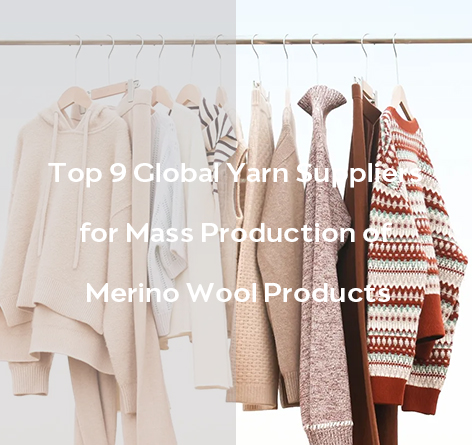The importance of high-end cashmere worldwide lies in its excellent quality and wide range of applications. High-end cashmere not only has the excellent thermal properties of traditional wool, but also is highly respected for its delicate, soft and natural luster. This makes high-end cashmere the raw material of choice for fashion, luxury brands and exquisite handicrafts. Its position in the global textile and fashion industry cannot be ignored, and it plays a vital role in promoting the development of the relevant industrial chain.
The importance of high-end cashmere is also reflected in its economic contribution. As a high value-added product, the production and sales of high-end cashmere have created rich economic benefits for relevant countries and regions. From farming, shearing and processing to the manufacture and sale of the final product, every link in this chain provides employment opportunities and contributes to steady economic growth both locally and globally.
World famous cashmere producing area
The Mongolian Plateau is known for its magnificent natural landscape and unique culture, and is also one of the most famous cashmere producing areas in the world. In this vast and inhospitable land, the natural environment plays a crucial role, directly affecting the quality and characteristics of cashmere on the Mongolian Plateau.
The Mongolian plateau has high terrain and cold climate, and this harsh natural environment gives birth to unique and precious cashmere. Sheep are free-range on the plateau, eating high-quality forage and drinking clear plateau water, which directly affect the texture and fiber length of cashmere. Due to the large temperature difference, the fluff here is more delicate and the fibers are longer, making Mongolian plateau cashmere renowned in the global market.
In addition, the atmospheric purity of the Mongolian Plateau is also a key factor in the quality of cashmere. Compared with the pollution of industrial developed areas, the air here is clean and pollution-free, ensuring the natural purity of cashmere. This fresh atmosphere makes Mongolian plateau cashmere a favorite pursued by high-end fashion brands.
Mongolian Plateau cashmere is known for its soft, light and warm properties. Because of the extreme changes in temperature, the sheep here grow more flexible hair and a finer texture. This makes Mongolian Plateau cashmere an ideal raw material for manufacturing high-quality cashmere products.
The color of cashmere is also unique to Mongolian Plateau cashmere. The sheep’s coat color varies with the climate and growing environment, presenting a rich natural color, from light beige to dark brown, each with its own characteristics. This unique color makes Mongolian Plateau cashmere more creative and diverse in design.
In the Mongolian Plateau, the cashmere supply chain is not just a business system, but a way of life closely linked to the local culture. Herders are the starting point for the entire supply chain, and through traditional grazing, they harvest the wool and then hand it over to experienced plush craftsmen. These artisans use their artisanal skills to transform raw wool into high-quality cashmere products.
With the development of modern technology, the supply chain is also gradually integrating the requirements of digitalization and traceability. Some companies use advanced technology in the Mongolian Plateau to ensure the quality and sustainability of their products by tracking and documenting every step of the process. This approach to the supply chain, combining traditional craftsmanship and modern technology, preserves the tradition of the cashmere industry while meeting the contemporary market’s demand for product quality and transparency.
Cashmere City
China plays a pivotal role in the global cashmere market. As one of the world’s largest cashmere producers, China occupies an important position in the international market with its huge output and diversity of cashmere products. China’s cashmere products are not only large in quantity, but also highly respected for their high quality, rich color and texture. The international fashion industry often looks to Chinese cashmere for a unique and high-quality raw material.
The reason why Chinese cashmere occupies a prominent position in the market is not only due to its rich resources, but also because China has accumulated rich experience in cashmere processing and manufacturing. Domestic manufacturing enterprises in Mongolia adopt advanced technologies and processes, making cashmere products competitive on a global scale. China’s leading position in the global cashmere market is also due to its well-established supply chain system, which is able to efficiently meet the needs of domestic and foreign customers.
The Inner Mongolia region is famous for its high-quality cashmere. The climate and geography here provide an ideal environment for cashmere production. The grasslands and climatic conditions in Inner Mongolia contribute to the growth of wool, making the fibers of cashmere thinner and softer. This delicate texture gives Inner Mongolia cashmere its unique comfort and luxurious touch.
Inner Mongolia cashmere is also characterized by its variety of colors and textures. Wool in different regions shows different characteristics due to differences in soil and climate, making cashmere products in Inner Mongolia have a richer choice. From deep natural tones to bright fashionable colors, Inner Mongolia cashmere can meet a variety of market needs, becoming the preferred raw material for fashion designers and manufacturers.
The cashmere supply chain in Inner Mongolia, China is well organized and efficient. From the acquisition and processing of wool to the manufacture of the final product, the entire supply chain is carefully designed and managed. First, the procurement phase of cashmere is carried out in breeding bases in Inner Mongolia, which are usually located on the grassland to ensure the quality and traceability of the wool.
The acquired wool is then sent to professional processing plants, which are equipped with advanced technology and equipment to ensure that the original quality of the cashmere is maintained during the processing process. After processing, the cashmere fibers are graded and classified to meet the needs of different products.
Finally, manufacturing enterprises in Inner Mongolia transform the processed cashmere fibers into a variety of end products, including cashmere sweaters and cashmere scarves. These products are quickly delivered to markets around the world through a robust distribution network.
Sustainability and social responsibility of high-end cashmere
In the course of its development, the cashmere industry has had a certain impact on the environment, which mainly involves grazing, grassland management and water resource utilization. In many cashmere producing areas, grazing is one of the main economic activities. Large-scale grazing can lead to overgrazing, which can lead to grassland degradation and desertification. This places a burden on ecosystems, affecting local biodiversity and land sustainability.
To address this problem, sustainable grazing management has become critical. The use of scientific pasture management practices, including pasture rotation and pasture rotation, helps to maintain pasture health and sustainability. Some cashmere producing areas have adopted sophisticated grazing techniques, using scientific and technological means to monitor and manage pastures to ensure that they maintain ecological balance while maintaining economic development.
Sustainability plays an important role in all aspects of the cashmere production chain. From grazing to weaving, adopting sustainable production practices is essential to reduce resource consumption and reduce environmental impact. During the grazing phase, the introduction of eco-friendly grazing techniques, such as rotary tillage and pasture maintenance, helps to maintain the fertility and ecological balance of the land.
In the weaving stage, efficient and energy-saving production processes are used to promote green manufacturing and reduce waste and energy waste. Some producers are committed to using renewable energy and environmentally friendly materials to reduce their overall carbon footprint. In addition, promoting the circular economy, which reduces the waste of resources by recycling and reusing waste cashmere products, is another aspect of sustainable development.
Social responsibility plays a key role in the high-end cashmere supply chain, involving the impact on Labour, communities and local economies. Many cashmere producers have taken steps to ensure fair wages, safe working conditions and reasonable working hours for workers in their supply chains. This helps to improve the living standards of producers and promote sustainable development of local communities.




